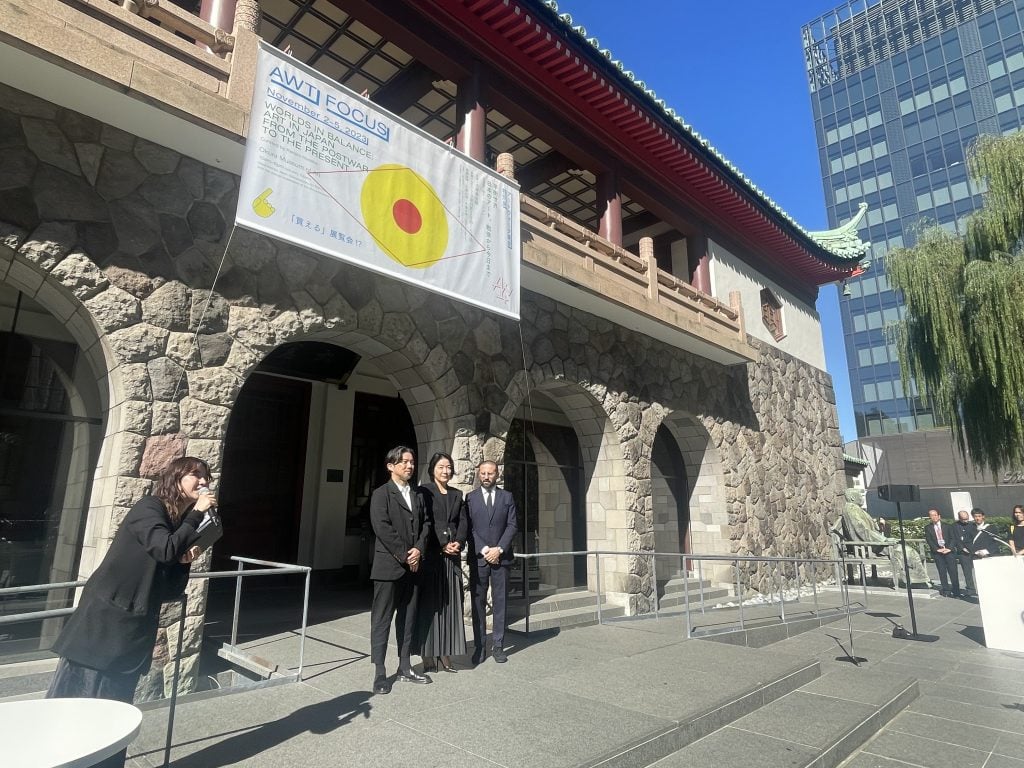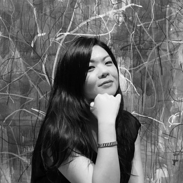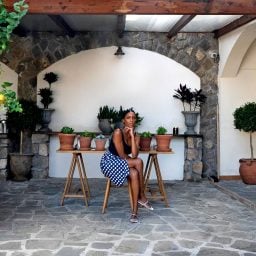The buses are back. The galleries are ready. Art Week Tokyo (AWT) returns for a third edition this week with greater ambition. The number of participating institutions and galleries remains more or less the same as that last year, but with the launch of a curated sales platform, thoughtful gallery exhibitions, and a symposium focusing on curators, the annual event is aiming much higher than just luring high-net-worth international visitors.
“Art Week Tokyo is a great occasion to introduce Japanese art to visitors coming from abroad,” noted Hozu Yamamoto of Tokyo Gallery + BTAP, which returned to AWT this year as one of the 50 participating institutions and galleries.
The gallery sold out all the works on show and gained many new customers during a very successful iteration of AWT in 2022. This year, the gallery presents a solo exhibition of Japanese-American photographer Yasuhiro Ishimoto. Yamamoto conceded that sales of photography work can be challenging (works are priced at five-digit or less in dollars), but he was still adamant about staging the show, as Ishimoto brought new perspective to Japanese aesthetics and beauty.
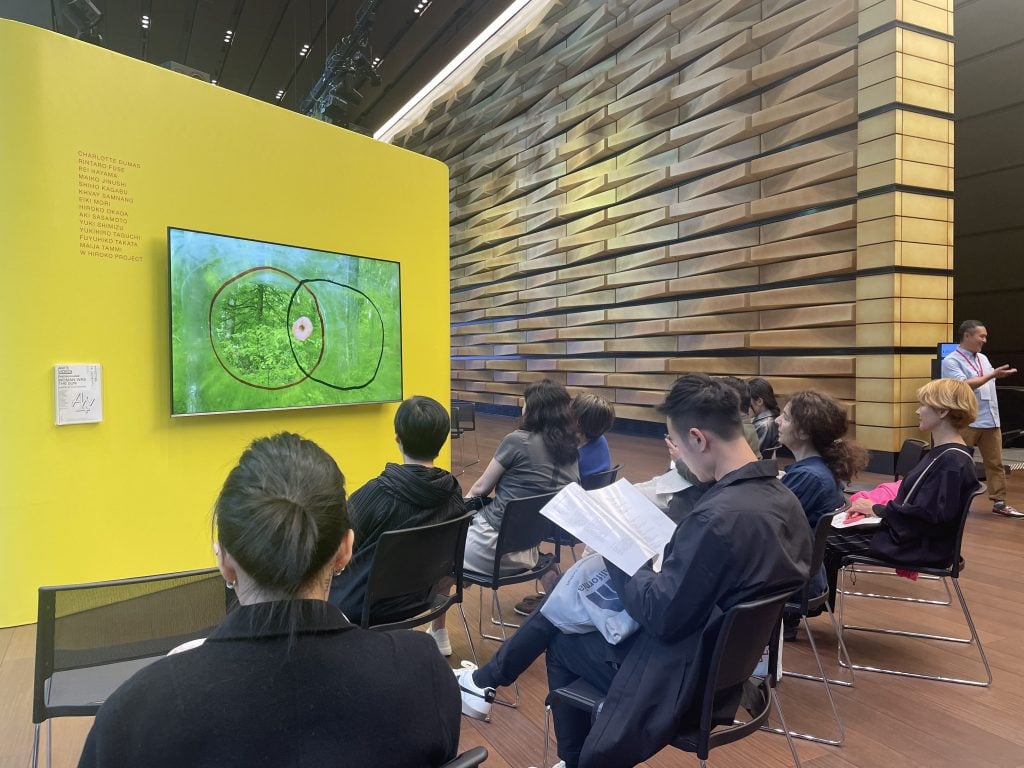
At Art Week Tokyo 2023’s video program curated by Chus Martínez. Photo: Vivienne Chow.
“At normal art fairs, it is difficult for people to understand Japanese art history. Here at AWT, we can take more time to explain and discuss these topics in detail,” Yamamoto added. “We want to show important works to the audience.”
‘Glocal’ Ambition
Organized in collaboration with Art Basel, AWT was set out as an alternative to the traditional art fair model. By bussing art exhibition-goers and international visitors around galleries scattered across the Japanese capital, the gallery weekend model was intended to stimulate locals’ interest in contemporary art and introduce foreign visitors to Japanese contemporary art, which has long been undervalued.
This year, however, it’s not just about Japanese contemporary art. Many participating institutions and galleries have presented contemporary art from the country alongside works by global artists. Besides the ambitious institution exhibitions, galleries are also making bold moves.
Take Ninagawa opened a stunning exhibition of the late British artist and filmmaker Derek Jarman at its new space. The show features not just Jarman’s films, Electric Fairy (1971), the artist’s first, and Imagining October (1984), but also includes a selection of rarely seen dark walled works known as Black Paintings created between 1986 and 1991. SCAI The Bathhouse, located at a 200-year-old former public bathhouse, is holding an elegant show of textured paintings and sculptures by the New York-based Mexican artist Bosco Sodi in the exhibition “Galaxy.”
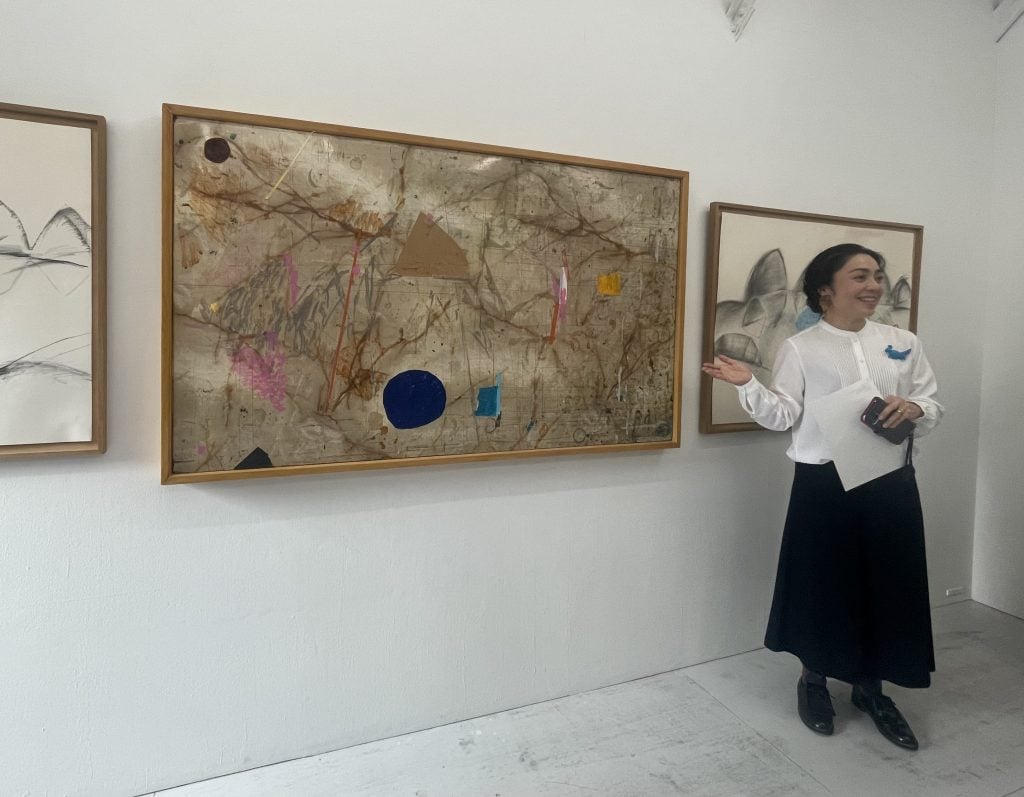
Gallerist Yuuki Imai of Kayokoyuki introduces the paintings of legendary painter Nobuya Hitsuda to a visiting crowd. Photo: Vivienne Chow
Other galleries have opted to show homegrown heroes. Waiting Room gallery is presenting a solo show of the Kyoto-based, 1975-born Saori Miyake, featuring a new series of cyanotypes and video works. Kana Kawanishi Gallery is staging a solo exhibition of Akira Fujimoto’s walled works created out of marine plastics found along Japan’s coastline. Works by the legendary Nobuya Hitsuda (b. 1941), who has taught artists such as Yoshitomo Nara and Kyoko Murase, can be found at his solo show at Kayokoyuki gallery.
Among the most delightful (re)discoveries was Yoko Terauchi (b. 1954), whose philosophical practice is vividly introduced in a solo show at Hagiwara Projects, which has quickly earned her a new fan base. Terauchi moved to London in 1979 and lived there for 20 years before returning to her native Japan. She exhibited at Victoria Miro and Chisenhale Gallery during her London years, an unusual achievement for an Asian woman artist in the west at the time.
“With each edition of Art Week Tokyo, I am reminded of the breadth, depth, and quality of contemporary art in Japan,” Atsuko Ninagawa Art Week Tokyo director and owner of Take Ninagawa, said in a statement. This year’s AWT also features a moving-image program curated by Chus Martínez. “I believe Art Week Tokyo is only scratching the surface of its potential to be a transformative art event for the city and beyond.”
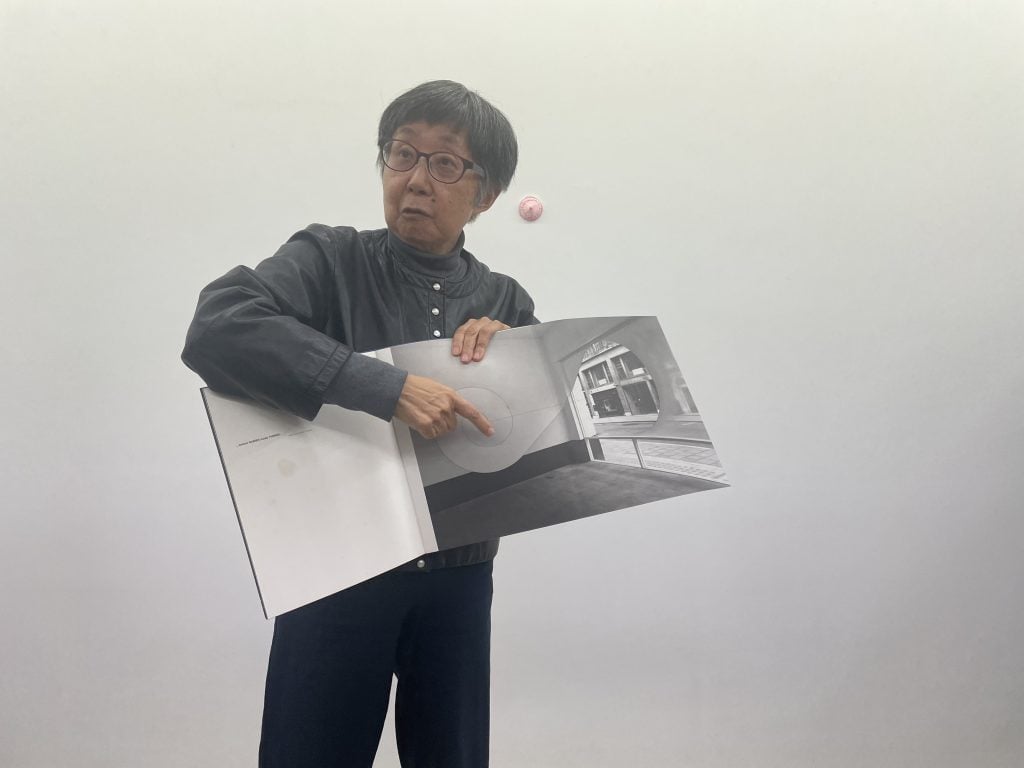
Japanese artist Yoko Terauchi introduces her artistic practice to exhibition-goers at her solo show at Hagiwara Projects.
More Than One Percent
As the world’s third biggest economy, Japan’s global art market share by value accounts for only one percent of the total, according to the Art Basel UBS 2023 art market report. But this percentage should be higher, according to Hayashi Yasuta, director of the arts and culture division of Japan’s Agency for Cultural Affairs.
“Japan has indeed come a bit late to promote contemporary art,” Hayashi noted in an interview. “It’s not just about the art fairs. We want to be a part of the global discourse, including museums, academics, in addition to art fairs.”
The hope is for AWT and Art Collaboration Kyoto (ACK), both government-backed initiatives, to rectify this by fostering an ecosystem where museums and art patrons can work closer with each other. The aim is also to interest more people in buying art in the future by giving them more benefits, Hayashi noted. He added that bridging the local art world with the global one remains the government’s ambition: “We are thinking about the next 50, 100 years.”
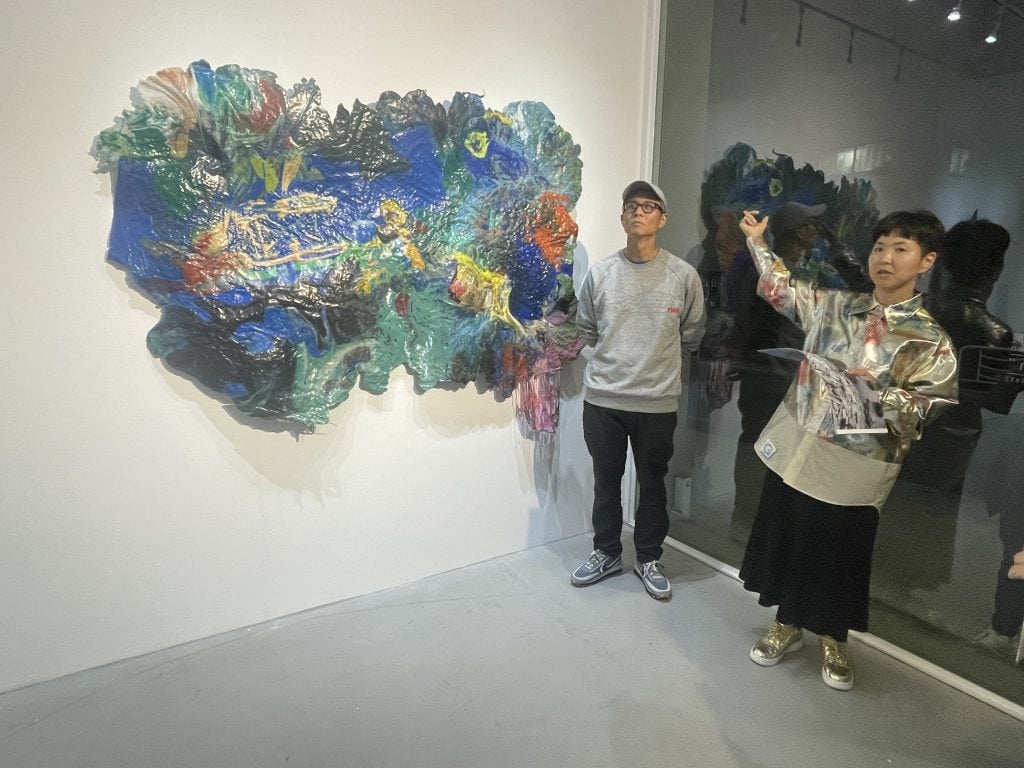
Gallerist Kana Kawanishi (right), introduces the work made of marine garbage by artist Akira Fujimoto during Art Week Tokyo 2023. Photo: Vivienne Chow.
As there are more contemporary art activities in the country, particularly the commercial ones, Hayashi hopes that industry players will be more active in responding to the art market report’s requests for data so that the team can have more accurate data to work with.
The Kyoto-based Japanese artist Kohei Nawa recalled that when he graduated from art school in the late 1990s, he was devastated. He did not know how to get into the art scene as it was very quiet at the time. But dramatic changes were observed over the past 20 years in the country and he is now more hopeful than before. As a professor at Kyoto University of Arts and Design, he has spotted a lot of young, talented artists.
“There are a lot of good artists in their 20s and 30s now. However, there aren’t so many young curators in Japan. New initiatives and platforms can be helpful to artists by bringing people in,” said Nawa.

Installation view of AWT Focus at Okura Museum of Art, Art Week Tokyo 2023. Photo: Vivienne Chow.
Art Fairs Are Still Necessary
While AWT is billed as an alternative to traditional art fairs, the art fair still appears to be necessary. The newly launched AWT Focus, curated by Kenjiro Hosaka, director of Shiga Museum of Art, Otsu, is perhaps closest to what an art fair could be.
This selling platform curated under the theme, “Worlds in Balance: Art in Japan from the Postwar to the Present,” at the century-old privately owned Okura Museum of Art features more than 100 works from 64 Japanese and Japan-based artists from across generations, each contributed by an AWT participating gallery. Some galleries said sales have been made at AWT Focus.
“This is the third year of AWT and it has already established its presence. It needs to keep evolving. AWT Focus shows how this initiative can evolve,” said Vincenzo de Bellis, Art Basel’s director of fairs and exhibition platforms. Rather than simply staging another fair in another city, AWT’s success can be referenced by cities outside of the locations of the four current Art Basel fairs. He revealed that new events may take place in 2025 or beyond.
“This is a very interesting model. By spotlighting a specific culture, it sheds light for international visitors coming in. It’s interesting for us to see how it will play out for other projects in the future. Asia is major market for us. We want to show our presence,” he said.
To gallerists, traveling to art fairs will still be necessary. Kayokoyuki has exhibited at Paris Internationale and Nada Miami. Waiting Room has also shown at Nada Miami. “AWT is a great opportunity but we still need to go to fairs. We just need to be very strategic,” noted Tomoko Ashikawa, director of Waiting Room.
Yamamoto of Tokyo Gallery + BTAP said that exhibiting at art fairs overseas are still necessary as selling expensive works domestically is very difficult. “We need to go abroad to sell works at higher price points,” he noted.
Art Week Tokyo 2023 runs through November 5.
